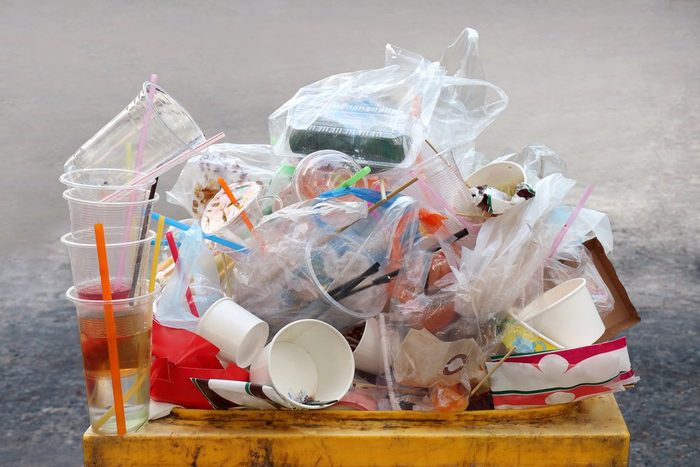
It’s time to reduce plastic waste
If you take a look around your kitchen or office right now, chances are you’ll notice you’re surrounded by plastic—water bottles, to-go coffee cups, straws, plastic grocery bags, food wrappers, take-out containers, single-serve coffee pods, disposable utensils, and produce bags. These are all examples of single-use plastic products, which is a hot topic nowadays based on both environmental and health concerns.
It’s certainly not realistic to remove all plastic from your life, but let’s examine some stats that may encourage you to reduce your single-use plastic footprint by ditching straws, switching to reusable water bottles, bringing cloth bags to the grocery store, and more.
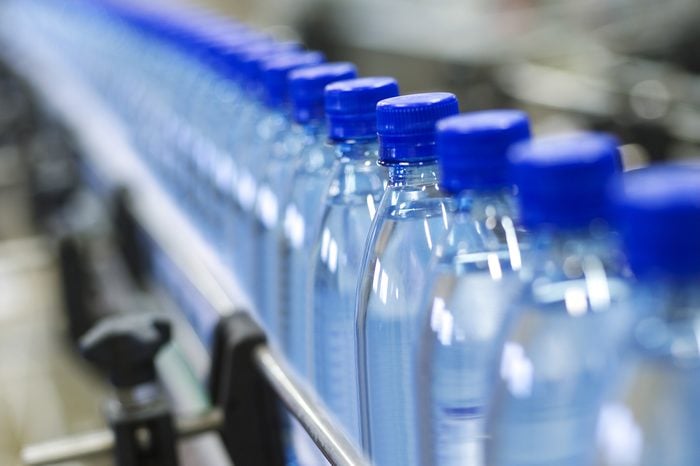
Plastic production is off the charts
The popularity of plastic, which began rising in the 1950s, is growing out of control—18.2 trillion pounds of plastic have been produced around the world, according to a study published in the journal Science Advances, a publication of the American Association for the Advancement of Science. And there’s no sign of slowing down, considering scientists say that another 26.5 trillion pounds will be produced worldwide by 2050.
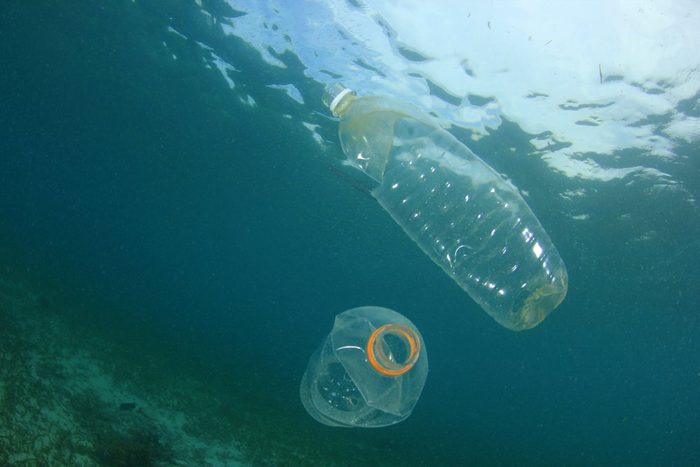
Plastic ends up in our oceans
“Every piece of plastic that has ever been created will remain in the environment in some form, but once we conveniently throw out our trash at home, wind and runoff carry our waste from landfills and streets down the sewer and directly to the ocean,” says Mystic Aquarium’s chief clinical veterinarian Jennifer Flower, DVM, MS. “With the average American throwing away 185 pounds of trash per year and globally producing over 320 million tonnes of plastic annually, the marine environment is taking a big hit from our daily disposal of plastic. Our plastic consumption is directly affecting the marine life in the ocean including fish, which is a main source of food for humans as well. Often our society is so focused on making our lives more convenient in the short term, but in the long run, our health and the health of marine life are at the expense of those everyday conveniences.”
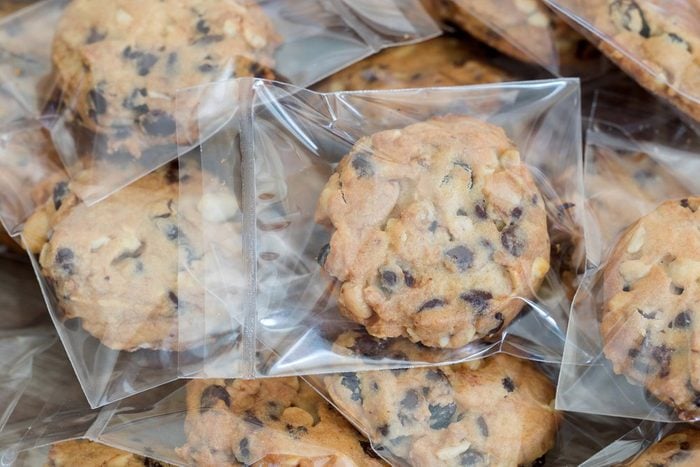
Most plastic is single-use
Did you know that roughly half of the annual plastic production—in 2016, this number totaled around 335 million metric tons—is destined for a single-use product? This includes items like plastic bags (which have an average lifespan of 15 minutes), packaging, water bottles, and straws. For instance, did you know that traditional liquid laundry detergents are usually packaged in high-density polyethylene (HDPE plastic jugs) and that 68 percent of these bottles are not recycled? Companies like Dropps are committed to reducing single-use plastic waste by offering laundry pods that are made of plant-based, biodegradable ingredients and shipped in 100 percent recyclable, compostable cardboard box.
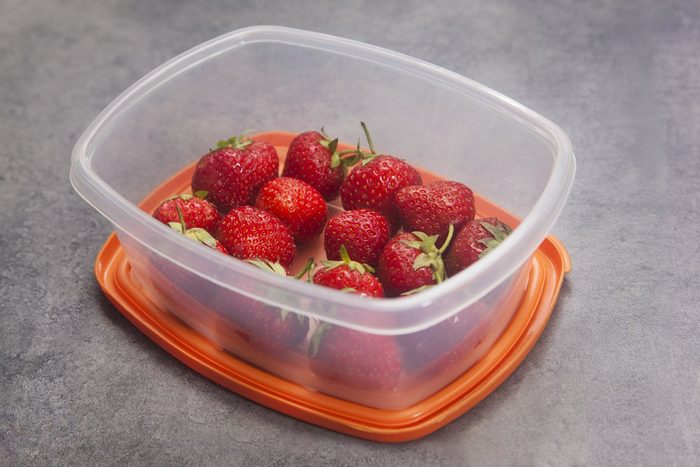
BPA mimics human hormones
BPA (bisphenol A) is a chemical that has been used in the production of plastics since the 1960s and often comes into direct contact with food, including plastic packaging, kitchenware, and the inner coatings of cans and jar caps. Studies show that BPA interacts with estrogen receptors and play a role in the pathogenesis of several endocrine disorders, including female and male infertility, early puberty, breast and prostate cancer, and polycystic ovary syndrome (PCOS). There’s a reason you see so many products being marketed as BPA-free these days.
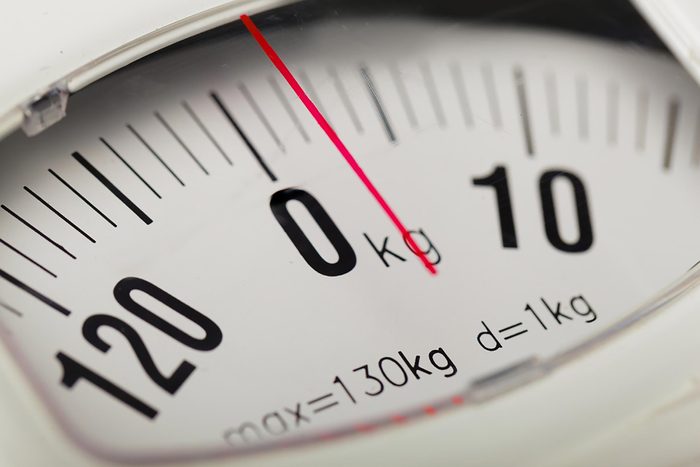
BPA linked to obesity
As a known endocrine disruptor, BPA can interfere with normal endocrine system functioning, including the serum levels of hormones that regulate metabolism. There is growing evidence that BPA can play a role in the development of obesity both in utero and later in life. For a kick-start, here are 7 ways to boost your metabolism.

BPA is bad for babies
A recent report reveals that using plastic containers to store or heat food in microwaves could pose a potential health risk to children. The American Academy of Pediatrics is calling for reforms after a report suggested that some chemicals found in food colourings, preservatives, and packaging material might pose a risk to children. The report cites “an increasing number of studies” that suggest certain food additives can disrupt hormones, growth, and development, as well as increase the chances of childhood obesity. The most concerning artificial additives? You guessed it: BPAs found in plastic containers and metal cans. Parents are urged to avoid using microwaves to warm food and beverages or placing plastics in the dishwasher.

BPA affects thyroid function
Thyroid hormones, which regulate energy in the body, are also altered by BPA. In November 2016, the International Journal of Environmental Research and Public Health published evidence linking BPA with autoimmune thyroid disorders (such as Hashimoto’s disease). Lab tests measuring BPA exceeded measurable detection limits in 52 percent of individuals with elevated thyroid antibodies. The toxic levels of BPA had caused their thyroid gland to be under autoimmune attack. Don’t miss these 13 silent signs you have a thyroid problem.
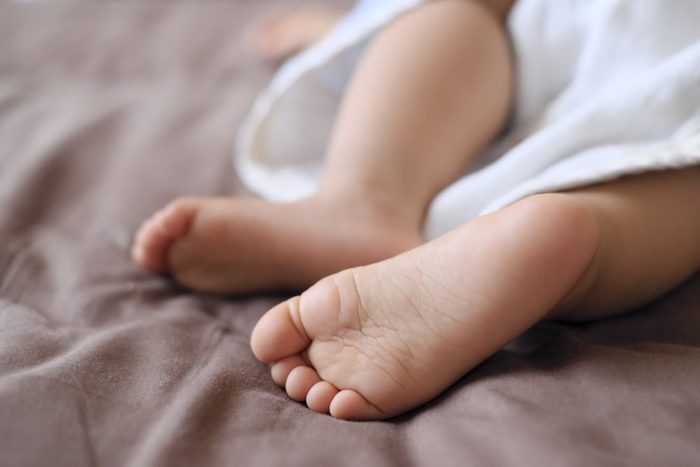
BPA causes birth defects and miscarriages
A new study has found evidence that BPA may negatively impact women’s reproductive systems and cause chromosome damage, birth defects and miscarriages. Researchers from Washington State University and the University of California, Davis, found that monkeys exposed to BPA in utero experienced reproductive abnormalities that increased their risk of giving birth to offspring with Down syndrome or even suffering a miscarriage.
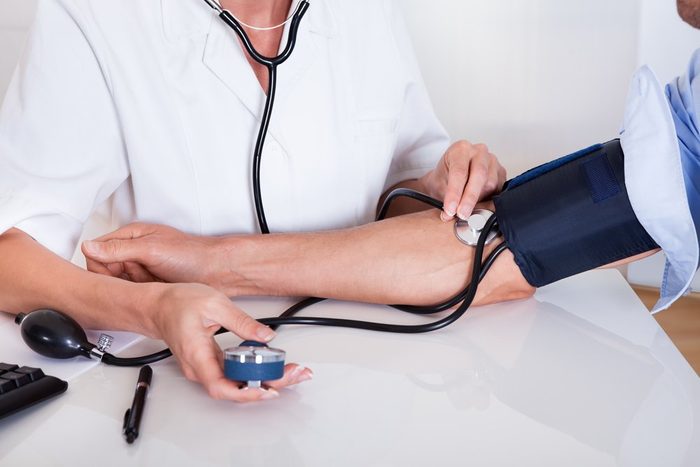
BPA increases blood pressure
Megan Casper, MS, RDN, a dietitian and owner of Nourished Bite Nutrition based in NYC, says that consuming beverages from cans lined with BPA can raise blood pressure. In clinical trials, volunteers drank the same beverage in glass bottles or cans. Two hours after consumption, researchers measured their urinary BPA concentration and blood pressure; BPA urine levels were higher in the canned group, and their systolic blood pressure jumped by an average of 4.5 mm Hg, compared to the glass bottle group. Avoiding plastic is just one of 13 ways green living can make you healthier.
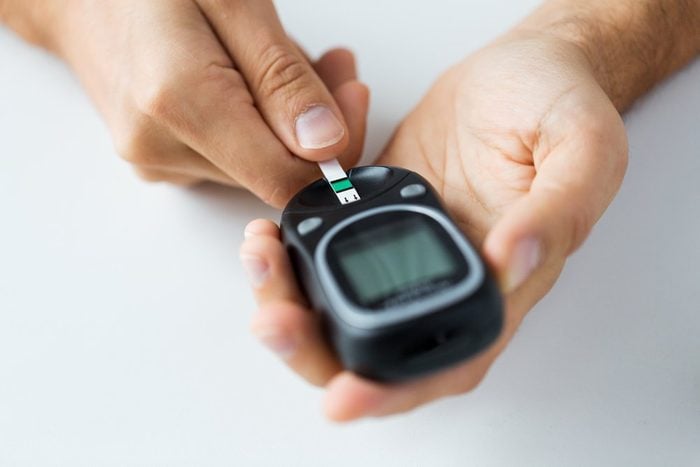
BPA increases diabetes risk
A report issued by the US Endocrine Society indicates that exposure to endocrine-disrupting chemicals (EDCs)—like BPA—can raise your risk of diabetes. The group pointed to numerous studies, including a long-term epidemiological study which tied EDCs to type 2 diabetes. Suffer from type 2 diabetes? Read up on how your diet can help control this disease.
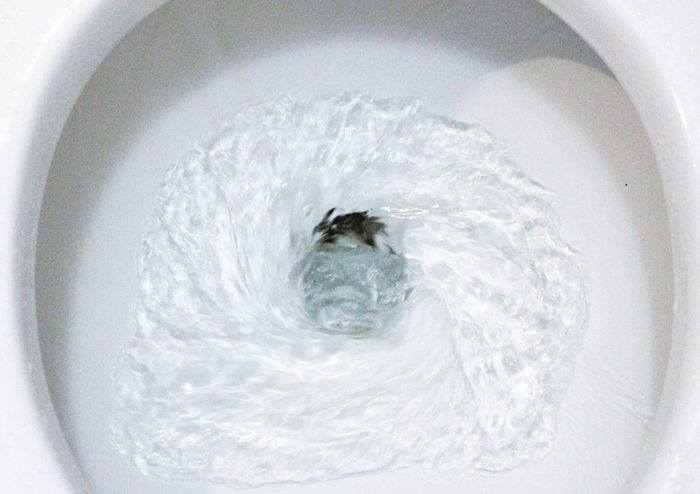
BPA irritates your bowels
A recent study shows that BPA has been associated with irritable bowel disease, by negatively impacting gut microbial amino acid metabolism. Irritable bowel disease is a collection of diseases that includes ulcerative colitis and Crohn’s disease. Exposure to BPA was also found to increase the levels of several compounds that drive colon inflammation.

BPA contributes to heart disease
Early research suggests that BPA can harm the heart and arteries, leading to troubles like arrhythmias (abnormal heartbeat) and atherosclerosis (build-up of plaque on the artery walls). Note: These facts about heart disease could save your life.
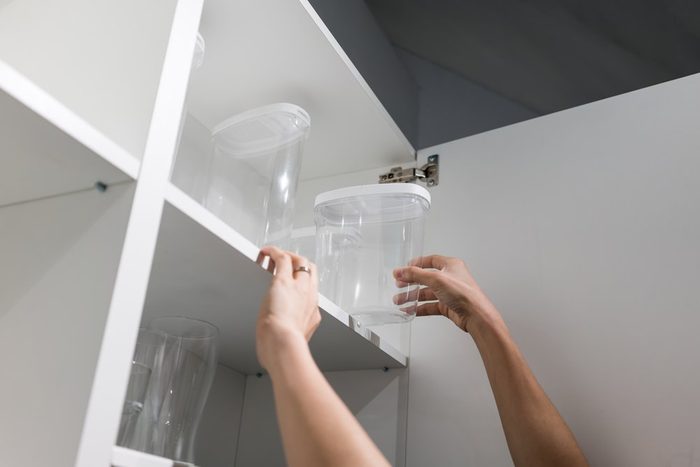
BPA-free may be B.S.
While it’s tempting to believe BPA-free plastics will solve these problems, the truth is more complicated. A recent study examined more than 450 BPA-free products going through ordinary wear and tear, such as microwaving, dishwashing, and sunlight exposure. More than 95 percent emitted chemicals that acted like estrogen—just like BPA. “So while BPA is on its way out, the fact is that the replacements to BPA just haven’t been studied well and may have similar effects,” says Casper. “In fact, BPS, a popular plastic replacement for BPA in water bottles, does not have to be labeled and, once ingested, behaves much the same way as BPA.” Consider upgrading to ECOlunchbox’s non-toxic, stainless steel food containers for packed lunches and leftovers. These environment-friendly containers come in a variety of sizes, feature leak-proof silicone lids. Compared to plastic, silicone lasts longer, stands up better against heat and cold, and is more ocean-friendly—plus it’s odourless, stain-resistant, hypoallergenic, and has no open pores to harbour harmful bacteria. Plus, they’re dishwasher and oven safe.

Linked to genital birth defects
Rodent studies show that prenatal exposure to some phthalates, another chemical found in plastic, can disrupt normal male reproductive tract development, causing undescended testicles and testicular abnormalities. Phthalates are also linked to hypospadias, a condition in which the opening of the penis is on the underside rather than the tip. If you are expecting, it’s especially wise to avoid plastic.
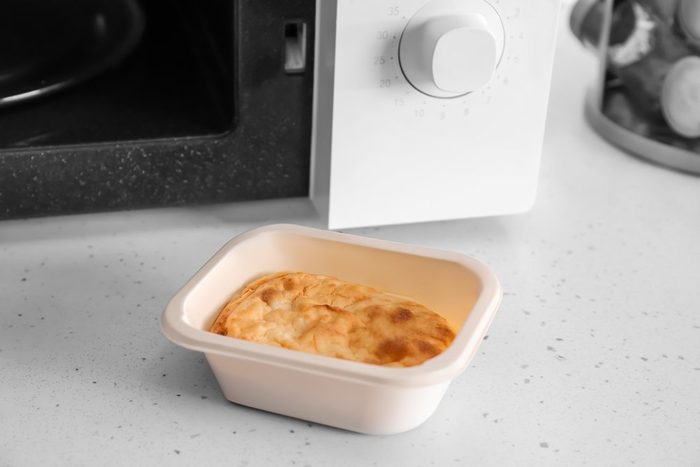
Heat and plastic don’t mix
According to Harvard medical experts, when food is wrapped in plastic—or placed in a plastic container and microwaved—BPA and phthalates may leak into the food. They note that migration is likely to be greater with fatty foods, such as meats and cheeses. “Heated plastic leaches chemicals 55 times faster, so whether you’re reheating a plate in the microwave, putting hot food in a storage container, or using a plate that’s been run through a hot dishwasher, you’re upping your chance of chemical leaching,” says Casper. If you want to microwave leftovers, choose a glass dish and leave the BPA-free lid off just to be safe. These cooking habits are also harmful for your health.
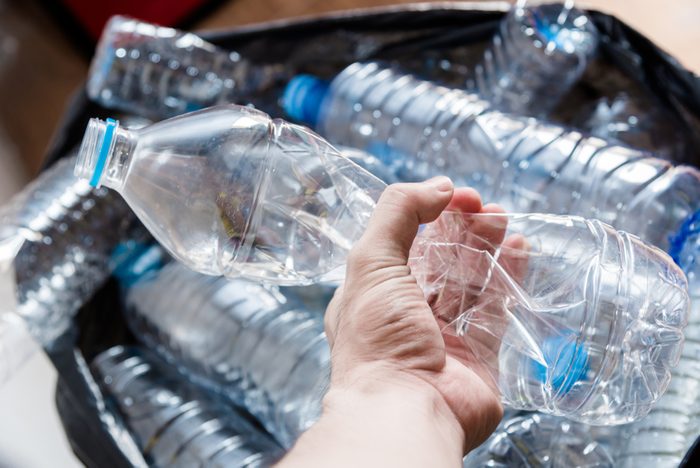
Bottled water is full of microplastic
Large pieces of plastic break down into microplastics. A recently released study tested 259 water bottles from 11 brands sold across nine countries, including the United States. The findings? A whopping 93 percent of those tested contained microplastic contamination—at an average of 10.4 plastic particles per litre of water. That’s double the plastic contamination found in tap water. Of these plastic particles, 65 percent were “fragments” of plastic, including the plastic used to make the bottle caps. Make the switch to reusable stainless steel water bottles, which don’t have any plastic parts; as an added bonus, their double-wall insulated design will keep your beverages cold for 24 hours or hot up to 12 hours. But if you do decide to drink more tap water, here are 5 things you need to know.
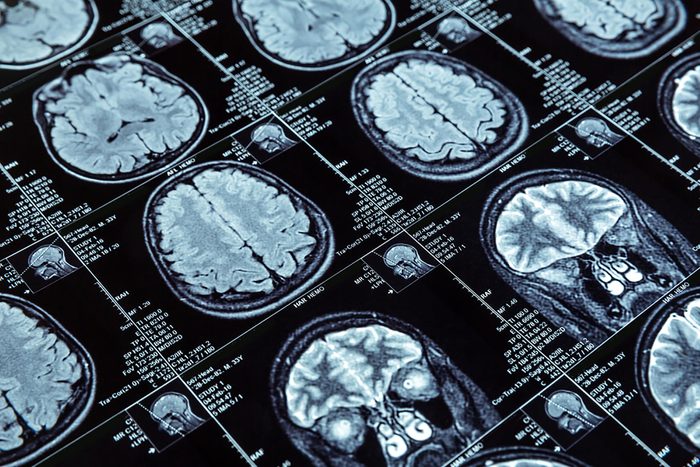
Phthalates could stunt brain growth
A study published in the The Journal of Neuroscience found that phthalates could alter the brains of rats. The team found when pregnant moms were fed food spiked with phthalates, their offspring had significant lack of both neurons and synapses in the medial prefrontal cortex, which is involved in such high-level cognitive functions as memory, decision-making, error detection, conflict monitoring, and cognitive flexibility.
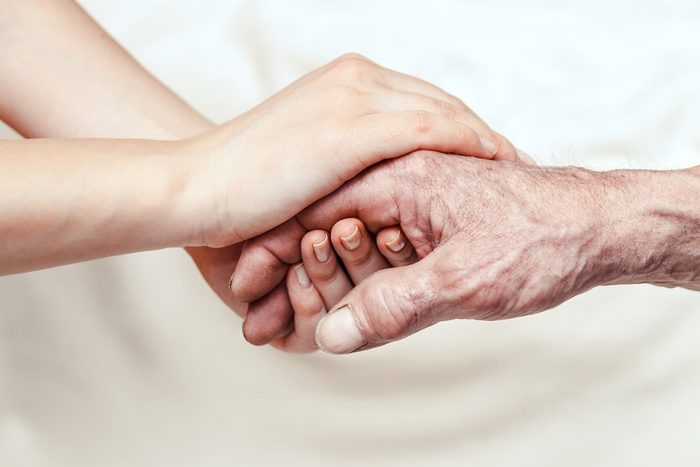
Plastic promotes Alzheimer’s disease
“Plastic promotes the formation of toxic brain proteins linked to the development of Alzheimer’s disease,” says Jennie Ann Freiman MD, author of The SEEDS Plan, a book inspired by her own mother’s Alzheimer’s disease. “The brains of people with Alzheimer’s disease are riddled with plastic deposits. Anyone with brain fog or impaired thinking should take note.” Plus, find out how this specific diet can help reduce your risk of Alzheimer’s disease.
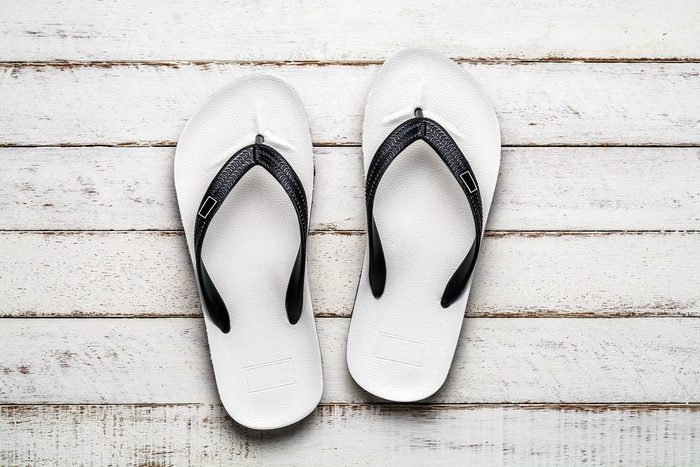
Your shoes could be toxic
Sporting the trendiest plastic shoes this season? They may put you at risk for long-term health problems, according to a study titled “Chemicals Up Close” by the Swedish Society for Nature Conservation (SNCC). They found plastic-based flip-flops and sandals have “disturbing concentrations” of harmful chemicals including phthalates. Even if you aren’t worried about the chemicals leeching into your skin, there’s also the environmental impact of disposing of these shoes when style trends change again.
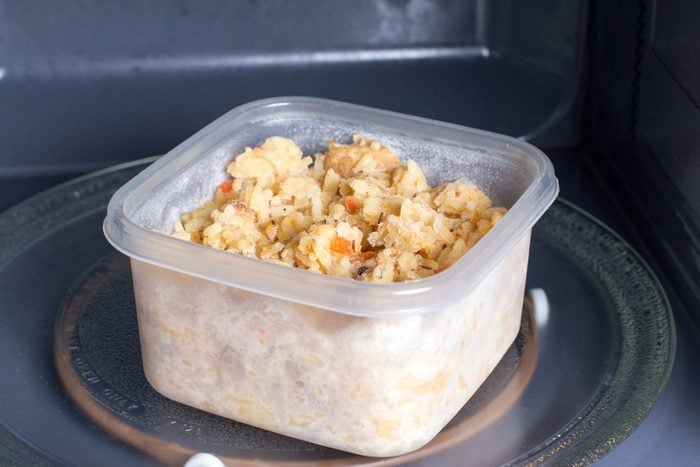
Scratches in plastic lead to leaching
Bits of plastic get into your food from containers through a process called leaching, and when plastic is scratched, it speeds up the leaching process. For that reason, be sure to throw out worn plastic items (such as food storage containers). To further avoid this toxic transfer, eat less canned food and more frozen or fresh food. Also, avoid using bottles and plastic containers that are made from polycarbonate (often marked with a number 7 or the letters PC) and phthalates (marked with a number 3 or PVC).
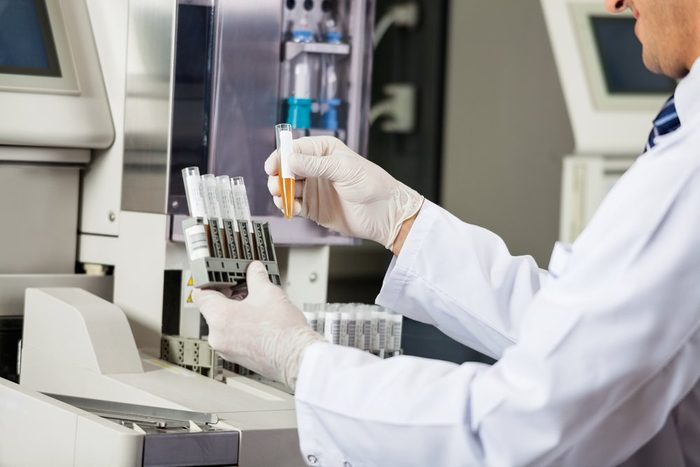
We’ve all been exposed
In the Fourth National Report on Human Exposure to Environmental Chemicals (Fourth Report), CDC scientists measured BPA in the urine of 2,517 participants and found BPA in the urine of nearly all of the people tested. This indicates how widespread exposure to BPA is in the U.S. population. According to the CDC, “Finding a measurable amount of BPA in the urine does not imply that the levels of BPA cause an adverse health effect.” Of course, more testing needs to be done to explore that theory.

Plastic could take away natural serenity
“We associate peace, relaxation, and good health with our coastlines,” says Brian Yurasits, Director of Development at The TerraMar Project, which raises awareness for ocean issues. Researchers at Michigan State University show that people who live near the water report less psychological distress. “People visit beaches and waterways to satisfy our natural inclination to be near the ocean,” says Yurasits. “If plastics become more pervasive in these natural places, then people won’t be able to get that same escape from reality and the stress-relief that they need.” Learn what really happens to your body when you’re stressed.
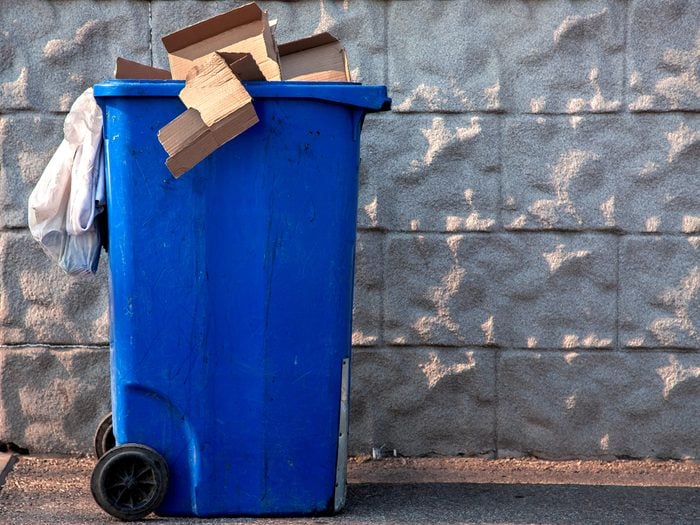
What recycling numbers really mean
What’s with those numbers on the bottoms of plastic products anyways? According to a new report from The American Academy of Pediatrics, steer clear of plastics with the recycling numbers 3, 6, and 7. Those numbers directly correspond to the chemicals that disrupt the endocrine system (phthalates, styrene, and bisphenols).
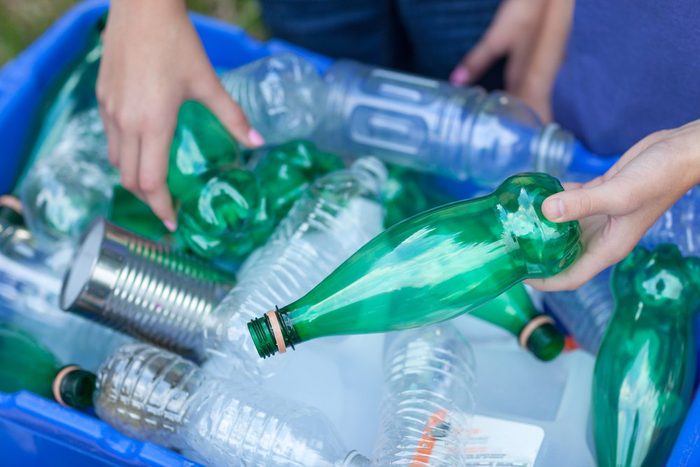
Not all plastic is recyclable
Did you know that plastic bags, straws, and coffee cups aren’t even recyclable? For instance, National Geographic cites the problem with recycling a coffee cup: While the outside of a coffee cup is made of paper, there’s a thin layer of plastic inside (to protect you from getting burned and to insulate the cup from cooling too quickly). Those two different materials would need to either be separated by hand or with a special machine, and that practice is too time-consuming and expensive. While you’re at it, check out these Canadian waste reduction tips.

You’re eating plastic dust at every meal
No matter how clean you think your house is, a Heriot-Watt University study reveals that you could be swallowing more than 100 tiny plastic particles with every meal. So where is it coming from? The soft furnishings and synthetic fabrics all around your house, which mix with dust and then fall on your dinner plate. The scientists concluded that the average person swallows up to 68,415 potentially dangerous plastic fibres a year simply through eating. While this is true, don’t miss these 11 sneaky causes of indoor air pollution.
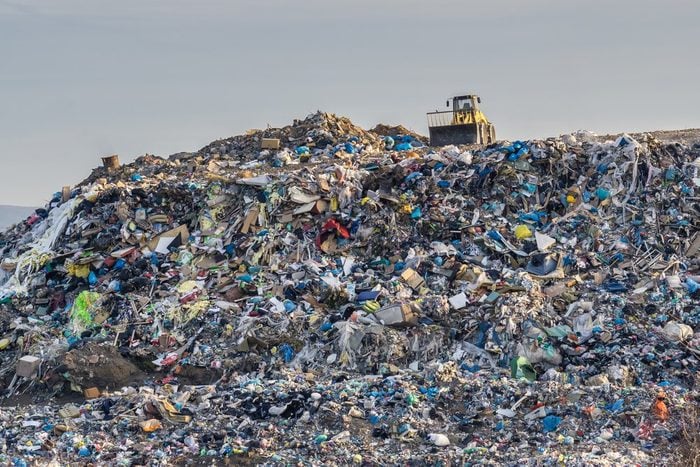
Plastic is here forever
The world has produced 8.3 billion metric tons of plastic, according to a study in the journal Science Advances. Shockingly, 6.3 billion metric tons of that has become waste, the majority of which is now accumulating in landfills and littering the ground, oceans, and air. If trends continue as they are now, there will be 12 billion metric tons of plastic in landfills by 2050.
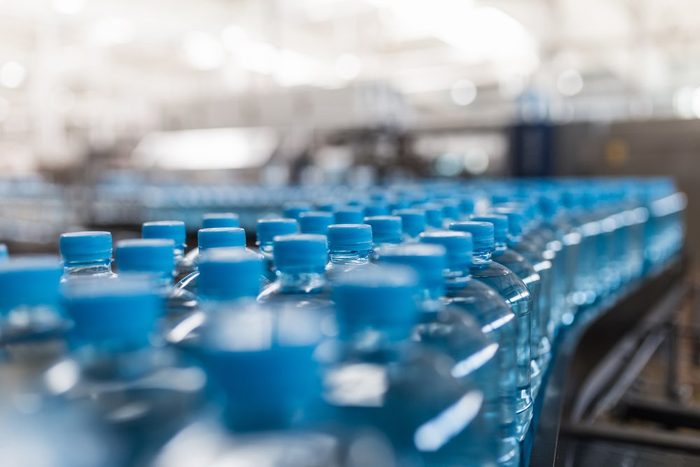
Plastic water bottles aren’t being recycled
Water bottles are made of completely recyclable polyethylene terephthalate (PET) plastic, which means they are 100 percent recyclable. However, of the approximately 50 billion plastic water bottles Americans used in 2006, we recycled just 23 percent; essentially, we toss 38 billion water bottles a year into landfills. Current statistics show that 1 million plastic bottles are bought around the world every minute and that number is expected to rise another 20 percent by 2021. So ditch single-use plastic bottles and invest in a reusable bottle, like Simple Modern that is made entirely from stainless steel—even the lid.
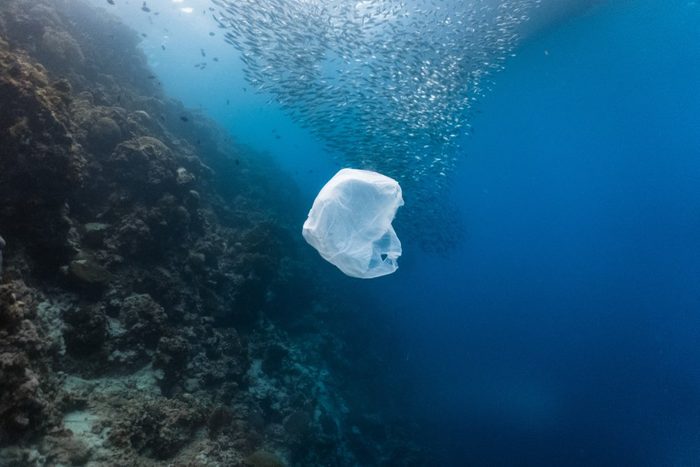
Ocean plastic is rising dramatically
In 1975, the National Academy of Sciences study estimated that about 0.1 percent of global plastic production ended up in our oceans annually. In 2015, a team of researchers examined how much plastic waste coastal countries around the world produced and then estimated how much of that could potentially end up in the ocean. The results, published in Science, indicate that about 4 million to 12 million metric tons of plastic washed offshore in 2010 alone. Scarier still, the authors predict that the annual amount of plastic waste heading out to sea will more than double in the next ten years.
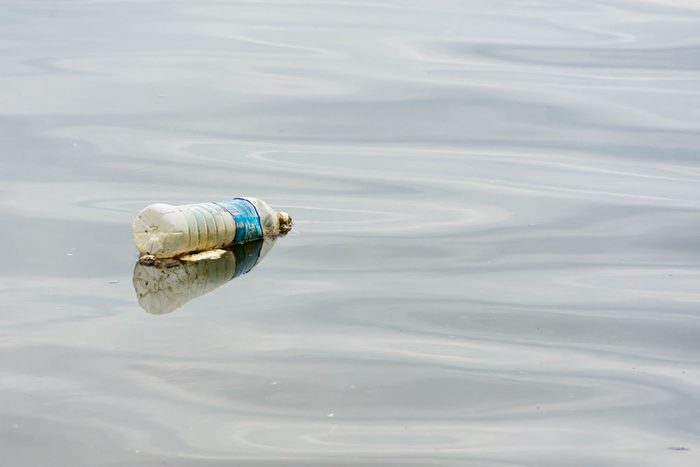
The Great Lakes are swimming in plastic
According to the United States Environmental Protection Agency (EPA), the five Great Lakes provide 21 percent of the world’s supply of surface fresh water. “About 22 million pounds of plastic flow into the Great Lakes each year,” says Jaclyn Wegner, director of conservation action at the John G. Shedd Aquarium in Chicago. “The Great Lakes are critical to the wellbeing of humans and wildlife alike. We rely on this water to be clean and accessible for people to drink and for animals to not only survive but thrive.”
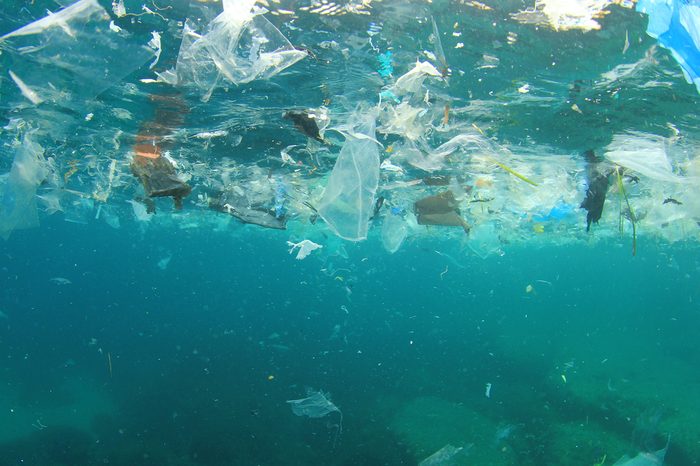
Microplastic impacts marine life
“The plastic that ends up in the Great Lakes can come in the form of macroplastics, like bottles and bags that are visible to us, or microplastics, which can be microscopically small,” says Wegner. “Microplastics can come from microfibres of synthetic materials, microbeads from personal care products, and other sources and can be easily ingested by animals like fish and birds.” When microplastics float on the surface or become buried in the sand, they are often mistaken as food sources for seabirds, turtles, and marine mammals, says Dr. Flower. This poses a serious threat to marine habitats, wildlife, and ecosystem balance.
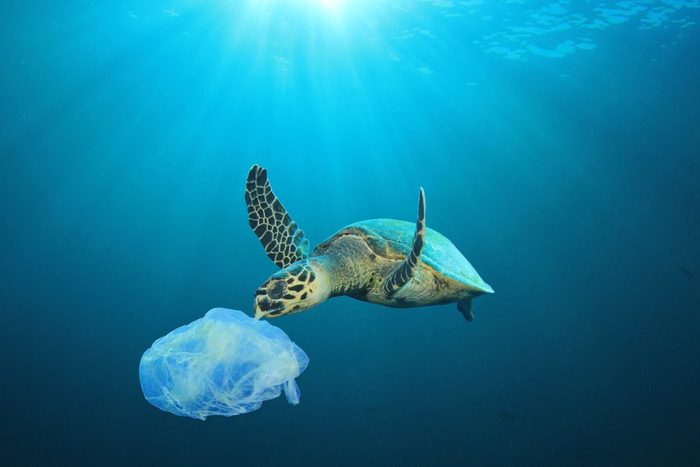
Marine animals are suffering
Nearly 700 species of marine animals have been impacted by marine debris, most of which is plastic. “All of us can make choices to reduce our use of plastic, preventing it from becoming pollution that can harm a wide variety of aquatic animals from fish to seabirds to plankton,” says Wegner, who notes that for over ten years, the Shedd Aquarium has hosted beach cleanups as part of their Great Lakes Action Days program. This has helped the non-profit organization prioritize straws as a non-recyclable single-use plastic item to focus on in encouraging individuals and businesses to reduce their use. “Keeping straws and microfibres out of animals’ habitats is an important way we can protect and care for them.”
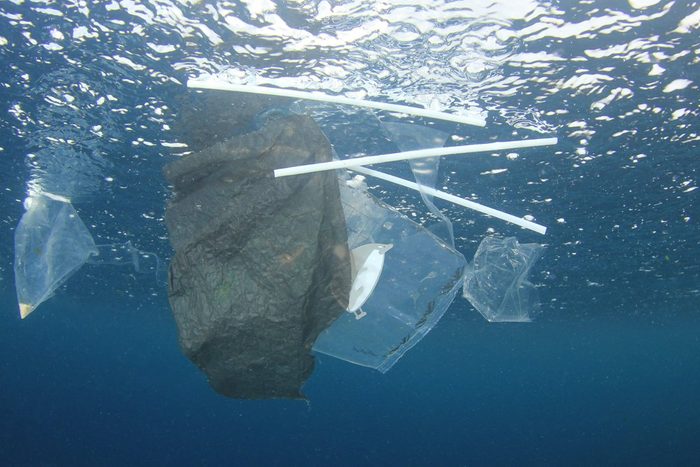
Straws are a serious problem
Companies like Starbucks are taking steps—the company says it’s banning plastic straws by 2020, citing environmental reasons. Still, says Wegner, straws are among top the 10 litter items collected at Great Lakes beach cleanups. In 2016, volunteers collected 1,594 pounds of litter—more than 90 percent of which was partially, or completely composed of plastic. But it’s not just the Great Lakes that are suffering, as volunteers at International Coastal Cleanups have picked up more than half a million straws and stirrers. (Here are 6 reasons why plastic straws are harmful for your health.) Can’t bear to part with your sipping device? Switch to a stainless steel variety you can use over and over again.
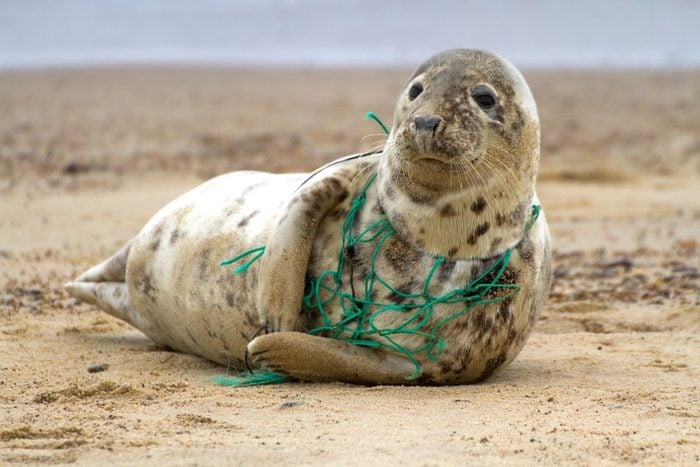
Plastic entanglement kills marine life
According to Greenpeace, all known species of sea turtle, 54 percent of all marine mammal species, and 56 percent of all seabird species have been affected by entanglement (mostly by plastic rope and netting) or ingestion (mostly by plastic fragments and microplastic) of marine debris. This includes an estimated 58 percent of seals and sea lions, plus whales, dolphins, porpoises, and manatees.
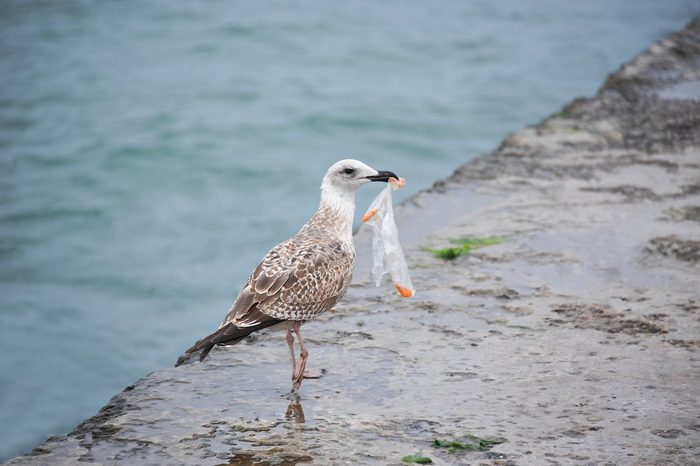
Seabirds are ingesting plastic
Marine life experts estimated that over 99 percent of all seabird species—and over 90 percent of individual seabirds—will have ingested plastic by 2050. By comparison, in 1960, plastic was found in the stomach of less than 5 percent of seabirds, rising to 80 percent by 2010. The biggest threat from ingestion occurs when plastic blocks the digestive tract or fills the stomach, resulting in malnutrition, starvation, and death.

Plastic’s chemicals can harm marine life
“A further consequence of ingestion is that the chemical constituents of plastic, as well as the toxins they absorb in the aquatic environment, can enter the bodies of marine organisms upon consumption,” says Wegner. Research shows that when animals ingest microplastic, it moves the plastic’s pollutants and additives to their tissues, resulting in some biological effects.
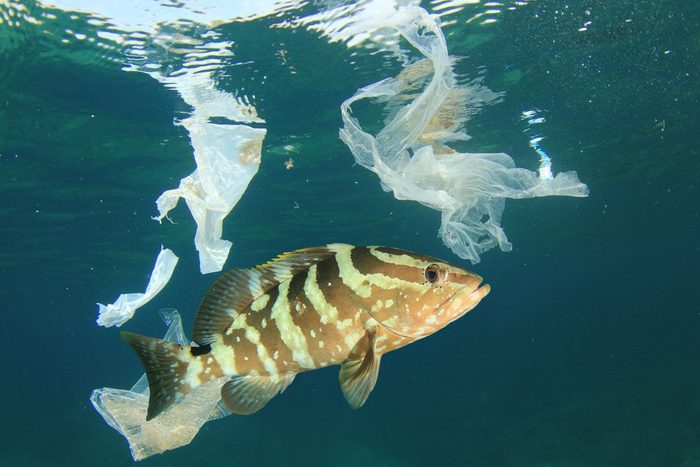
More plastic than fish
By 2050, environmental scientists estimate that there will be more plastic than fish (by weight) in the world’s oceans. This could seriously impact the world’s food supply, not to mention the many health risks associated with having so much plastic in our food chain.
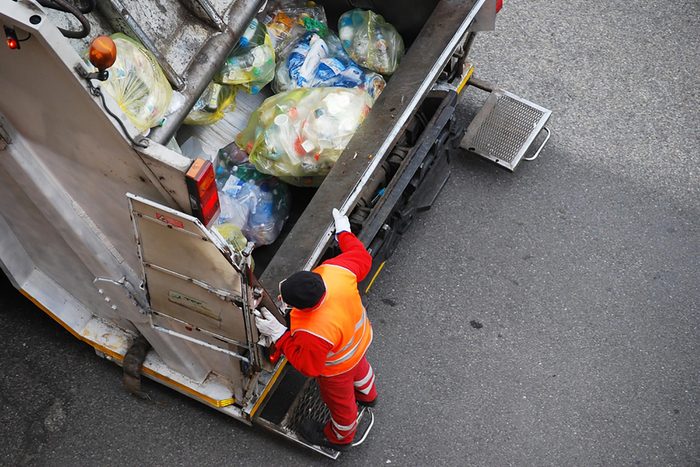
Truckloads of plastic
One study shows that 32 percent of the 78 million tons of plastic packaging produced annually ends up in our oceans—to help comprehend that level of devastation, it’s the equivalent of pouring one garbage truck of plastic into the ocean every minute. Researchers expect this rate to increase to two per minute by 2030 and four per minute by 2050.
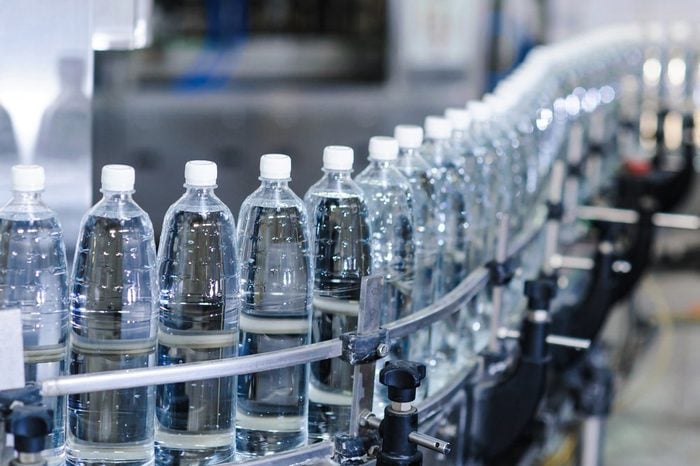
Biodegradable plastic doesn’t actually break down
A study from Michigan State University shows that special additives that claim to break down polyethylene (plastic bags) and polyethylene terephthalate (soda bottles) don’t work as planned when these products are left in common disposal situations, such as landfills or composting. “There was no difference between the plastics mixed with the additives we tested and the ones without,” reported Rafael Auras, co-author and MSU packaging professor.
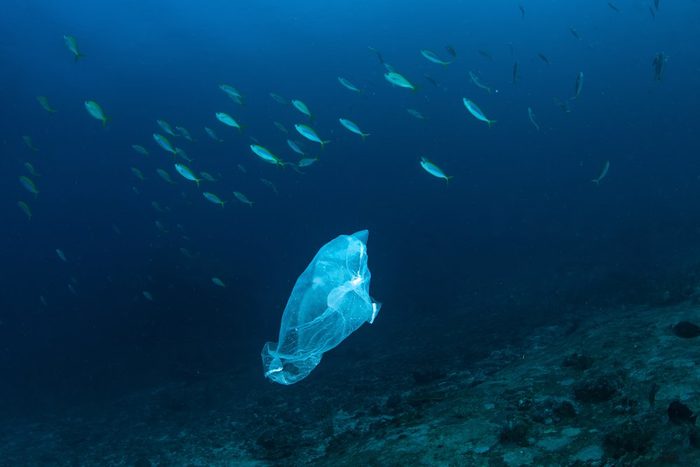
The problem runs deep
Single-use plastic has officially reached the world’s deepest ocean trench, according to a new study: A plastic bag was found 10,898 metres below the surface. Once in the deep-sea, plastic can endure for thousands of years and is a threat to delicate deep ocean ecosystems that were previously untouched by man.
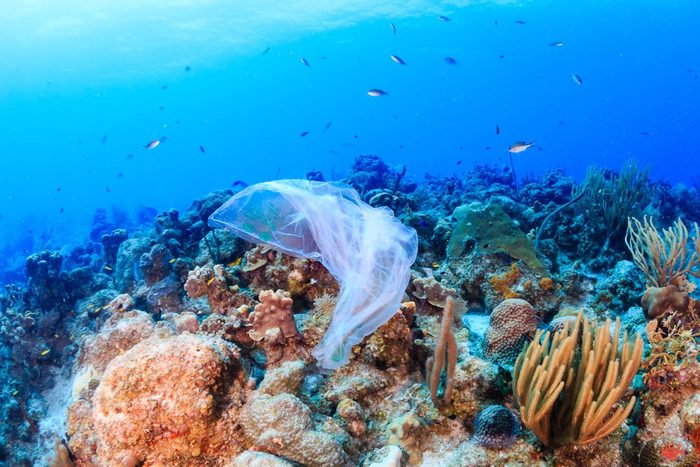
Coral reefs are dying
Yes, coral reefs are beautiful to explore while snorkeling and diving, but they are more than just eye candy—they’re living, breathing ecosystems that provide homes for 25 percent of all marine life. Plus, 275 million people depend directly on them for their food and livelihoods. Already struggling to survive climate change, reefs now have a new enemy: plastic. In a survey of 159 coral reefs in the Asia–Pacific region, published in Science, researchers estimate there to be 11.1 billion plastic items entangled in the corals. The plastic actually starves reefs of the oxygen and light they need and releases toxins that allow bacteria and viruses to invade.

Laysan Albatross babies are dying
“One bird species, in particular, the Laysan Albatross, is particularly affected by plastic pollution,” says Sarah Callan, BS, Assistant Manager of the Animal Rescue Program at Mystic Aquarium. “With approximately 400,000 nesting pairs on Midway Atoll—a small atoll that is roughly 1,200 miles away from civilization — almost 90 percent of the chicks that hatch each year end up with plastic in their stomach. Sadly, many of the chicks are malnourished from a stomach full of plastic and don’t survive to the fledgling stage of life.”
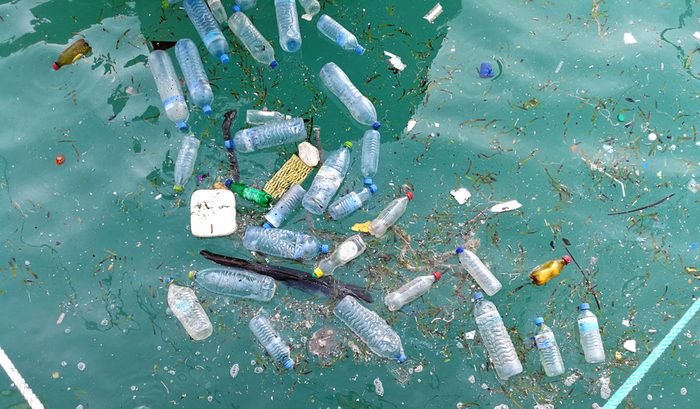
Floating garbage piles
Marine debris in the Pacific accumulates into something called the Great Pacific Garbage Patch—the largest of the five offshore plastic accumulation zones in the world’s oceans. Located halfway between Hawaii and California, this mass of plastic debris takes up over 600,000 square miles of ocean, which is twice the size of Texas. At the time of sampling, there were more than 1.8 trillion pieces of plastic in the patch that weigh an estimated 80,000 tonnes.
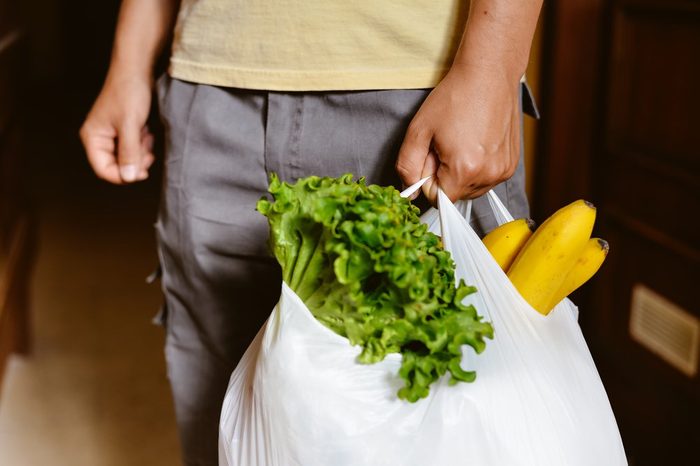
Plastic bags banned
Because 2 million single-use plastic bags are distributed per minute around the world, many U.S. cities and countries worldwide are banning and/or taxing their use. Washington, DC, was one of the first cities to implement a tax on the bags and uses the revenue collected for the Anacostia River Clean Up and Protection Fund. San Francisco has completely banned them and reports a 72 percent reduction in plastic bag pollution. In 2017, Kenya implemented a countrywide ban, while Australia did so in 2011. China has banned them too.
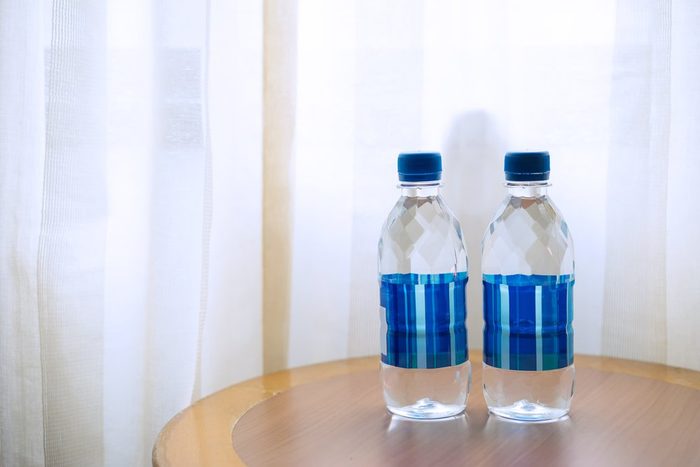
Plastic emits methane
A study published in PLOS One found that some of the most common plastics release the greenhouse gasses methane (the primary component of natural gas) and ethylene (a hydrocarbon gas) when exposed to sunlight. Researchers noted concerns over the scale of plastic production and waste, as these could contribute to greenhouse gas emissions over time—and these can impact climate change.

Ocean microplastic outnumbers stars
The next time you look up at the skies on a cloudless night, ponder the enormity of the following statistic: As much as 51 trillion microplastic particles litter our seas, which is 500 times more than the number of stars in our galaxy.
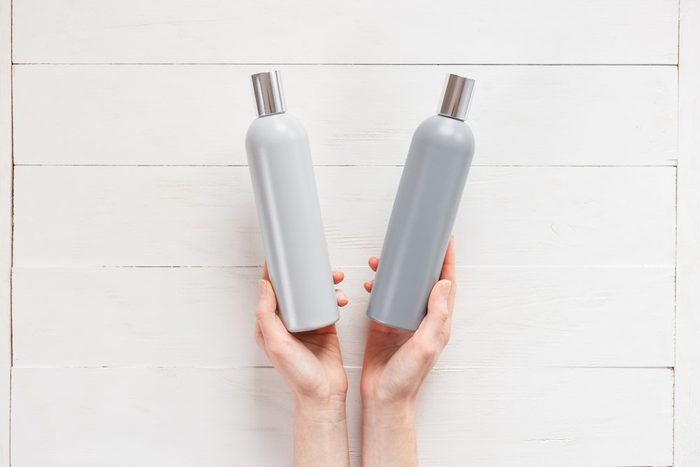
Beauty products count, too
There are more single-use plastic products to consider in your daily life beyond straws, water bottles, and grocery bags. For instance, more than 80 billion plastic bottles are being disposed of around the world every year just from shampoo and conditioner alone. This is why environmentally conscious packaging is an important and growing trend. Companies dedicated to sustainable beauty practices, like Ethique (the French word for ‘ethical’), have prevented the manufacture and disposal of more than 350,000 plastic containers worldwide. They’re the world’s first completely zero-plastic, zero-waste beauty brand; their concentrated face, hair, and body products last two-to-five times longer than their traditional bottled counterparts, and dissolve completely. Even the sleeves they arrive in are 100 percent dissolvable and compostable, meaning zero consumer waste. Next, read up on why making the switch to “clean beauty” is a good idea.
